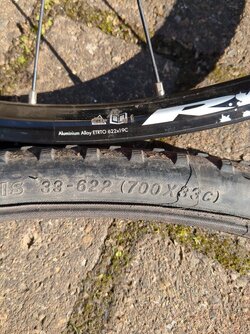I'm after new tyres but noticed that the tyres are
700x33c and the rims are 622x19cc. ??
These tyres came with the bike and I've had no issues with them other than they are now worn down
So just curious if something amiss with the differential of dimensions and should the tyre match the rims
Also I was going to go tubeless in these rims but I believe ( maybe wrong ) that you need tubeless ready rims and tubeless tyres ( obviously )
The rims are for clincher tyres of that helps
Thanks all
700x33c and the rims are 622x19cc. ??
These tyres came with the bike and I've had no issues with them other than they are now worn down
So just curious if something amiss with the differential of dimensions and should the tyre match the rims
Also I was going to go tubeless in these rims but I believe ( maybe wrong ) that you need tubeless ready rims and tubeless tyres ( obviously )
The rims are for clincher tyres of that helps
Thanks all

